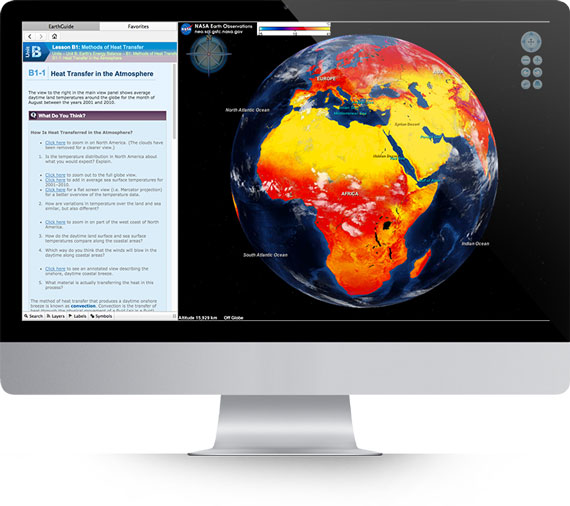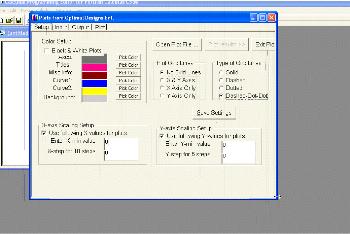What is the abbreviation for Interactive Heat Transfer? What does IHT stand for? IHT abbreviation stands for Interactive Heat Transfer. About Press Copyright Contact us Creators Advertise Developers Terms Privacy Policy & Safety How YouTube works Test new features Press Copyright Contact us Creators.
“Please accept our thanks and congratulations for your very interesting work which I am sure are having a great positive impact in our society.” — from Roberto Quevedo, Instituto Volcanológico de Canarias, INVOLCAN, Puerto de la Cruz, Tenerife, Canary Islands, Spain
What is it?
Interactive Heat Transfer (iht) Software
Based on computational physics, Energy2D is an interactive multiphysics simulation program that models all three modes of heat transfer—conduction, convection, and radiation, and their coupling with particle dynamics. Energy2D runs quickly on most computers and eliminates the switches among preprocessors, solvers, and postprocessors typically needed to perform computational fluid dynamics simulations. It allows you to design 'computational experiments' to test a scientific hypothesis or solve an engineering problem without resorting to complex mathematics. Work is also underway to incorporate other types of energy transformations (e.g., phase changes and chemical reactions through the Stefan condition) and support multiple types of fluids (e.g., air and water).

How to cite it?
Charles Xie, Interactive Heat Transfer Simulations for Everyone, The Physics Teacher, Volume 50, Issue 4, pp. 237-240, 2012.
| An IR image of a heated model house with a ceiling | An IR image of a heated model house without a ceiling |
| An Energy2D simulation of a heated house with a ceiling | An Energy2D simulation of a heated house without a ceiling |
How well does it model reality?
The conduction part of Energy2D is highly accurate, but the convection and radiation parts are not 100% accurate. Hence, in cases that involve convection and radiation, Energy2D results should be considered as qualitative. The pictures to the right show a comparison of the results of Energy2D simulations with images from infrared thermography for a simple model house. The thermal patterns predicted by Energy2D roughly match those from a thermal camera.


How many papers have used it?
More than 40 scientific papers have used Energy2D as a research tool (not just a citation), demonstrating its wide applications across science and engineering.
How many books have recommended it?
Iht Software Heat Transfer
The following is a list of books that have recommended Energy2D:

- Franco Landriscina, Simulation and Learning: A Model-Centered Approach, Springer, 2013
- Jiyuan Tu, Guan Heng Yeoh, and Chaoqun Liu, Computational Fluid Dynamics, Second Edition: A Practical Approach, Butterworth-Heinemann, 2012
What people are saying about it?
“...we have suggested the adoption of the platform Energy2D for a very effective “what-if” game in terms of the construction of cases of study eventually much more complex than the one here addressed. We have shown a solid reliability of the simulation in the description of our experiment: it can open the way to a basically unlimited number of applications, including those, for example, in which convective transport phenomena play a non-negligible role.” — from Stefano Oss, European Journal of Physics
“The software program Energy2D is used to solve the dynamic Fourier heat transfer equations for the Convective Concrete case. Energy2D is a relatively new program (Xie, 2012) and is not yet widely used as a building performance simulation tool. To gain more confidence in the predictions with Energy2D, an analytical validation study was therefore carried out first, inspired by the approach described in Hensen and Nakhi (1994). Those analytical solutions and the simulation results of the dynamic response to a 20°C temperature step change on the surface of a concrete construction with the following properties were compared for this research... the simulation results never divert from the exact solution more than 0.45°C and it is therefore considered acceptable to further use this model.” — Dennis de Witte, Marie L. de Klijn-Chevalerias, Roel C.G.M. Loonen, Jan L.M. Hensen, Ulrich Knaack, & Gregor Zimmermann, Journal of Facade Design and Engineering
“Thank you for your absolutely great app which helps me a lot for visualizing my lecture in thermodynamics. It is also very nice to see that three platforms are supported and every single one is free to use. That is just awesome and I want to say thank you for all users. I do not know how many messages of this type you are receiving.” — from Martin Weise, Austria
Interactive Heat Transfer Iht Software Free
“In gearing up to teach a course called Building Science this semester, I somehow stumbled across your program Energy2D and Energy3D. I was really impressed by how simple and easy these tools were and I'm definitely going to integrate them into some portion of my lectures.”— Prof. Brent Stephens, Department of Civil, Architectural and Environmental Engineering, Illinois Institute of Technology, USA
“I am currently involved in renewable energy related research activities and teaching. I have downloaded and demonstrating Energy2D for my heat transfer course. It is really a very useful tool.”— Dr. Mazharul Islam, Department of Mechanical Engineering, Taibah University, Saudi Arabia
“Today during the lunch break a little simulated comparison fan in the suction and blowing operation collector here about 50x70 cm and fan with 2 meters / second. [The result] is confirmed by the experiences of several users: pressure losses and less volume of air in the blowing operation.” (Link to the source)
“...what was really interesting, was that when I continued playing with the simulator, sometimes my convection examples would split into two cycling air cells, one above and to the left, one below and to the right, with the hot air blasting right for the cold source, rather than rising. That's really interesting, because I've experienced this when using smoke demonstrations in class, and the fact that the simulator can capture that behavior shows how accurate this teaching tool actually is.” (Link to the source)
“...this free software is basic, yet you can modify properties and all, the desktop download gives better results and the pages have a choice of practical setups to download and use that are very practical” (Link to the source)
Course Description
Heat transfer refers to the transfer of thermal energy, and it is an extension of thermodynamics. Heat transfer processes are ubiquitous to many engineering applications, as well as to conditions in the natural environment. They are central to all manner of energy conversion and utilization systems, as well as to a wide range of commercial products and technologies such as those associated with the aerospace, biomedical and electronic industries. The same can be said of mass transfer, which refers to the relative transfer of chemical species in a mixture.
Learning Objectives
Students completing this course are expected to:
Interactive Heat Transfer Iht Software Windows 10
- internalize the terminology and physical principles associated with heat transfer;
- be able to identify pertinent transport phenomena for any process or system involving heat transfer;
- be able to use requisite inputs for computing heat transfer rates and/or material temperatures;
- be able to develop appropriate models of real processes and systems and to draw conclusions concerning process/system design or performance from the attendant analysis; and
- be able to account for the effects of species transfer under conditions for which heat and mass transfer are analogous.
Textbook

Fundamentals of Heat and Mass Transfer, 7th Edition, by T.L. Bergman, A.S Lavine, F.P. Incropera and S. P. Dewitt. John Wiley and Sons, 2011.
Interactive Heat Transfer (IHT)
IHT is a general purpose equation solver with an accompanying library of commonly used heat transfer equations and thermophysical property functions. Version 4.0 can be down-loaded from the foregoing Web address to your lap top. The software provides a workspace into which a heat transfer model can be keyed, with relevant equations and properties drawn from the library, and solves the model to obtain the dependent variables of interest. Parameter sensitivity studies are readily performed, and results can be plotted to assess the effect of changes in the independent variables. The model and results can be saved and copied to a Word document, which can be submitted with your solution to a homework problem.
Interactive Heat Transfer Iht Software Download
The software includes a Quickstart Guide that provides an overview of IHT essentials and can be mastered in little more than an hour. This modest investment of time will reap benefits in many hours saved by using the software to solve homework problems, particularly those involving complex models with extensive calculations. But, some words of caution: (i) Carefully develop your model on paper before keying it into the workspace. Time savings afforded by IHT are meaningless unless the model correctly represents conditions of the problem. (ii) Perform a simple hand calculation to confirm absence of a programming error and hence accuracy of the IHT results. A list of IHT operators and functions is appended to this document.
Your confidence in using the software will build quickly. To assist in the process, IHT includes an Examples menu which provides programmed models for fifteen of the examples appearing in the textbook. In the book, the examples are flagged by inclusion of the IHT icon, and in each case you are encouraged to examine the IHT version.
Interactive Heat Transfer (iht) Software Download
Users have the option of running a Basic or Advanced version of IHT by clicking on a toggle button. The Advanced version provides additional models for standard heat transfer problems.
Student Evaluation
Grades will be based on the following point distribution:
- homework problems and quizzes (20),
- three, hour-long examinations (50), and
- final examination (30).